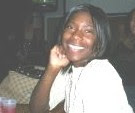I tried to scan the images from my notebook to post on this blog to give you all a little bit of insight into what goes on in this wacky brain of mine, but my scanner did not like that idea. So, I decided to just type them the way they are and hopefully you'll get the idea!
Give me Some Space
It is quite interesting what can be done with space when the opportunity is presented. But, who says we must default to any particular standard of page spacing? Fischer does a good job of illustrating how limiting the print page can be. In the poems that start on page 723, lines and stanzas effect the time perceived by the reader. Lines and stanzas are not so fixed in time. Though there is a sense of time, the reader is not constrained or confined by it. The sense of time is left to the reader to interpret.
Spacing and time also illustrated in the movement of stanzas. The falling, slipping, or running in to stanzas could be due to the content or some other occurence unknown by looking at the page. Movement may not be relative to page limitations, thus stanzas may be capable of constant movement.
It looks different and reads differently leaving it's interpretation totally up to the reader. It does not require anything from the reader, nor does it illicit a clear response. The reader constructs what he or she wants of the text.
Due to the ambiguity of space between stanzas time also seems to be ambiguous. 3X111 Tristychs numbers the stanzas, yet again leaving it to the reader to discern for themselves what significance if any the numbering will have. The numbers could be a means of measurement, it could be parts of a whole, or it could mean absolutely nothing at all (though I highly doubt this). Nevertheless, the default form of spacing between stanzas allows the reader to read this poem as they would any other and even to treat the numbering as part of creative expression.
Space does not have to hinder artistic creativity, but rather adds to the definition of it's meaning. In "Blanco", space operates inside the poem and works differently in different places of the poem. In this poem it functions as a pause, much like you would if you reached the end of a line and helps the reader navigate through the text. So, in some ways it guides the reader in constructing the text, yet it may be left entirely up to the reader to construct the significance of the text or the spacing within the text.
The poem also changes form a few times. Paz opens this text up for even more views of interpretation by doing this. All excellent uses of space and how it can work to form interpretations.
SuperVision
At first glance, I related the image on page 30 of Supervision to the stanza 14. of 3x111 Tristychs due to the colors of yellow relating to the chick inside the white egg and the streaks of blue representing the blue song. After thinking more about the imagery I became stuck on the image on page 81. It is a photo of the leaves of dahlia plant opening or closing as a response to the plant's moisture. After a while I became fixated on it, because just like the yellow chick, in the white egg, singing a blue song it represents life. The layers surround the object to be protected within it's folds. Each entity is enfolded within another.
the white egg
the yellow chick
the blue song
Each part has a layer.



